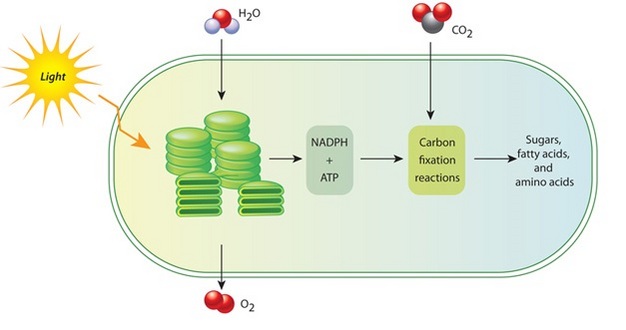where does carbohydrate synthesis occur Carbohydrate metabolism describing synthesis glycolysis glycogen utilization describes
Have you ever wondered how plants are able to make their own food? It’s all thanks to a process called photosynthesis, which takes place in the chloroplasts of plant cells. Let’s dive deeper into this fascinating phenomenon! First, let’s talk about the two main parts of a chloroplast where photosynthesis occurs: the thylakoid membranes and the stroma. The thylakoid membranes are stacked on top of each other, forming structures called grana. It is here where light energy is converted into chemical energy, in a process called the light-dependent reactions. These reactions produce ATP (adenosine triphosphate) and NADPH (nicotinamide adenine dinucleotide phosphate), which are used in the second stage of photosynthesis. The stroma is the fluid-filled space surrounding the grana, and it is in this area where the light-independent reactions occur. Also known as the Calvin cycle, this stage uses the ATP and NADPH produced in the light-dependent reactions to convert carbon dioxide into glucose. This glucose can then be used as fuel for the plant, or stored as a complex carbohydrate called glycogen. Speaking of glycogen, did you know that it is not just found in plants, but also in animals? In fact, the process of glycogen synthesis is similar in both plants and animals. It starts with the conversion of glucose-6-phosphate into glucose-1-phosphate, which is then combined with UTP (uridine triphosphate) to form UDP-glucose. This UDP-glucose is then added to a growing glycogen molecule, forming branches and creating a highly branched, compact structure. Overall, photosynthesis and glycogen synthesis are two amazing processes that contribute to the sustainability of life on earth. Without photosynthesis, plants wouldn’t be able to produce their own food, and without glycogen synthesis, animals wouldn’t have a way to store energy for later use. The next time you see a tree or eat a carb-heavy meal, take a moment to appreciate the wonders of nature and how everything is interconnected.
If you are searching about Carbohydrate Biosynthesis I: Glycogen Synthesis - YouTube you’ve visit to the right web. We have 5 Pics about Carbohydrate Biosynthesis I: Glycogen Synthesis - YouTube like Carbohydrate Biosynthesis I: Glycogen Synthesis - YouTube, Digestion and Absorption of Carbohydrates – Human Nutrition and also Carbohydrate Biosynthesis I: Glycogen Synthesis - YouTube. Here it is:
Carbohydrate Biosynthesis I: Glycogen Synthesis - YouTube
 www.youtube.comcarbohydrate synthesis biosynthesis
www.youtube.comcarbohydrate synthesis biosynthesis
What Is The Difference Between Simple And Complex Carbohydrates? | New
 www.newhealthadvisor.comcomplex carbs simple vs carbohydrates foods between difference decay food refined mean cause diet impact tooth much types carb eat
www.newhealthadvisor.comcomplex carbs simple vs carbohydrates foods between difference decay food refined mean cause diet impact tooth much types carb eat
Two Main Parts Of A Chloroplast Where Photosynthesis Occurs
 aydendesnhnichols.blogspot.comDigestion And Absorption Of Carbohydrates – Human Nutrition
aydendesnhnichols.blogspot.comDigestion And Absorption Of Carbohydrates – Human Nutrition
 pressbooks.bccampus.cadigestion carbohydrates absorption carbohydrate human nutrition allison calabrese cc
pressbooks.bccampus.cadigestion carbohydrates absorption carbohydrate human nutrition allison calabrese cc
Schematic Model Representation (A) Model Of Carbohydrate Metabolism
 www.researchgate.netcarbohydrate metabolism describing synthesis glycolysis glycogen utilization describes
www.researchgate.netcarbohydrate metabolism describing synthesis glycolysis glycogen utilization describes
Two main parts of a chloroplast where photosynthesis occurs. Schematic model representation (a) model of carbohydrate metabolism. Complex carbs simple vs carbohydrates foods between difference decay food refined mean cause diet impact tooth much types carb eat